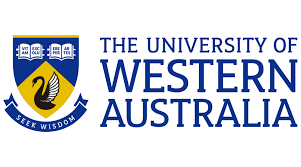University of Western Australia: Female rodents affect evolution of male teste size
A new international study has found patterns of female distribution in space and time in 33 species of Australian rodents affects the evolution of male testes size.
The study, Spatial and temporal distribution of females influence the evolution of testes size in Australian rodents published in Biology Letters, confirmed female availability influences the strength of sperm competition in Australian rodent species.
The research was led by Dr Renée C. Firman, ARC Future Fellow from The University of Western Australia’s Centre for Evolutionary Biology, in collaboration with evolutionary biology researchers from UWA, Flinders University and Columbia University in the United States.
“We used phylogenetic analyses on 33 species of rodents to understand the link between the distribution of females and sperm competition, sperm competition essentially being male-male competition after mating,” Dr Firman said.
“We found that males of these social species had smaller testes compared to solitary species, suggesting that dominance hierarchies among social males lead to reduced levels of sperm competition.”
Dr Firman said the study also found that testes size increased with decreasing mating season length, indicating the temporal synchrony of female receptivity predicts the level of sperm competition in Australian rodents.
The results suggest males may be effective in monopolising reproduction within social groups, which leads to reduced levels of sperm competition relative to non-social species where free-ranging females cannot be controlled.
“Overall, our results show that patterns of female distribution, in both space and time, can influence the strength of post-mating sexual selection among species,” Dr Firman said.
Ultimately, patterns of female distribution would affect the strength of sperm competition by dictating the extent to which males were able to prevent females from re-mating.
“This study helps our understanding of how the spatial and temporal distribution of mating opportunities have shaped the evolution of sperm competition,” said Dr Bruno Buzatto, Flinders University Lecturer in Terrestrial Ecology who is also affiliated with UWA and Macquarie University.
Many of Australia’s rodent species are threatened by introduced predators, habitat clearance and degradation, and climate change.
“This study provides insight into aspects that regulate reproductive events and levels of male fertility in these species,” Dr Firman said.

